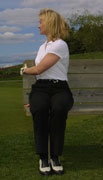Avoid Back Pain While Shovelling Snow
As the seasons start to turn, we sometimes forget things from the year before. In winter, we may underestimate the preparation needed to tackle the snow and ice. We might forget our mittens, we might forget the proper footwear for damp and slushy streets, or we might forget our posture when it comes to maintaining our sidewalk or driveway.
Snow and ice create a hazardous situation for everyone. Shovelling and using salt, sand, or other ice-melting substances (like kitty litter) help to reduce the potential for slip and fall accidents.1
Apart from dressing properly for the weather and making sure you have a sturdy, lightweight shovel, there are a few practices you can follow to help make snow-shovelling safer1,2:
- Stand with stability: Stand with your feet at hip-width apart to maintain your balance. It’s also best to wear boots that are non-slip when you shovel. This will help protect you from sliding when shovelling.
- Keep the weight close to your body: Hold the shovel close to your body to guard against straining or pulling a muscle. When the snow is deep, try to shovel smaller amounts (3–5 centimetres/1–2 inches) of snow at a time.
- Grip strategically: Space your hands apart on the handle to increase your leverage when lifting the snow.
- Lift with your legs: Bend from your knees, not your back, when lifting. Not only does it protect your back, but you can strengthen your legs as well!
- Engage your core: Tighten your stomach muscles when lifting snow. This helps to protect your back as you lift.
- Don’t twist: Avoid twisting your body when you lift. Move your feet instead to turn your body.
- Don’t fling the snow: Make sure to walk to place the snow on the side of the path rather than throwing it. Turn your feet in the direction you’re dumping the snow—this better positions you to maintain good form. Your whole body will thank you.
Snow shovelling can be a very strenuous activity, and even more so without the correct, protective form. Ask your chiropractor for more tips on improving your strength and stability.
With the proper preparation, tools, and technique you can make shovelling safer for you, and your walkways safer for your family, friends, and neighbours.
Happy shovelling!
References
- Snow Shovelling. Toronto Paramedic Services. Available at: https://torontoparamedicservices.ca/safety-tips/snow-shovelling/. Accessed October 24, 2016.
- Shovelling. Canadian Centre for Occupational Health and Safety. 2011. Available at: https://www.ccohs.ca/oshanswers/ergonomics/shovel.html. Accessed October 24, 2016.
Copyright, Canadian Chiropractic Association







